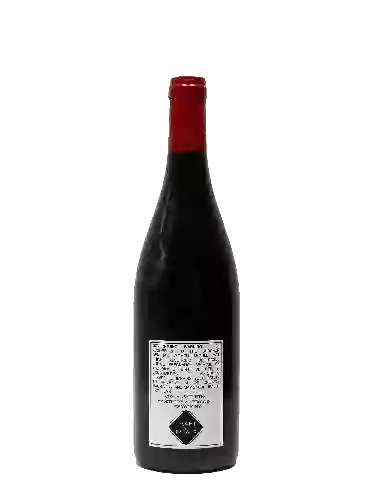
Domaine Jean GrivotChardonnay Bourgogne
In the mouth this white wine is a powerful with a nice freshness.
This wine generally goes well with rich fish (salmon, tuna etc), shellfish or mild and soft cheese.
Taste structure of the Chardonnay Bourgogne from the Domaine Jean Grivot
Light | Bold | |
Dry | Sweet | |
Soft | Acidic |
In the mouth the Chardonnay Bourgogne of Domaine Jean Grivot in the region of Burgundy is a powerful with a nice freshness.
Wine flavors and olphactive analysis
On the nose the Chardonnay Bourgogne of Domaine Jean Grivot in the region of Burgundy often reveals types of flavors of orange, citrus fruit.
Food and wine pairings with Chardonnay Bourgogne
Pairings that work perfectly with Chardonnay Bourgogne
Original food and wine pairings with Chardonnay Bourgogne
The Chardonnay Bourgogne of Domaine Jean Grivot matches generally quite well with dishes of pasta, rich fish (salmon, tuna etc) or shellfish such as recipes of spaghetti with tuna (real italian recipe), rice croquettes with salmon or lobster and scallops on a bed of leeks.
Details and technical informations about Domaine Jean Grivot's Chardonnay Bourgogne.
Discover the grape variety: Chardonnay
The white Chardonnay is a grape variety that originated in France (Burgundy). It produces a variety of grape specially used for wine making. It is rare to find this grape to eat on our tables. This variety of grape is characterized by small bunches, and small grapes. White Chardonnay can be found in many vineyards: South West, Burgundy, Jura, Languedoc & Roussillon, Cognac, Bordeaux, Beaujolais, Savoie & Bugey, Loire Valley, Champagne, Rhone Valley, Armagnac, Lorraine, Alsace, Provence & Corsica.
Last vintages of this wine
The best vintages of Chardonnay Bourgogne from Domaine Jean Grivot are 2013, 2016, 2014, 2011
Informations about the Domaine Jean Grivot
The Domaine Jean Grivot is one of of the world's great estates. It offers 21 wines for sale in the of Burgundy to come and discover on site or to buy online.
The wine region of Burgundy
Bourgogne is the catch-all regional appellation title of the Burgundy wine region in eastern France ("Bourgogne" is the French name for Burgundy). Burgundy has a Complex and comprehensive appellation system; counting Premier Cru and Grand Cru titles, the region has over 700 appellation titles for its wines. Thus, Burgundy wines often come from one Vineyard (or several separate vineyards) without an appellation title specific to the region, Village or even vineyard. A standard Burgundy wine may be made from grapes grown in one or more of Burgundy's 300 communes.
News related to this wine
The appellations of Bourgogne
Understand the hierarchy of Burgundy wine appellations in less than a minute! Our social media: Facebook: https://www.facebook.com/BourgogneWines/ Twitter: https://twitter.com/BourgogneWines/ Instagram: https://www.instagram.com/vinsdebourgogne/ LinkedIn: https://www.linkedin.com/company/bivb Find out more on our website: https://www.bourgogne-wines.com/ #BourgogneWines #Bourgogne ...
The appellations of Bourgogne
Understand the hierarchy of Burgundy wine appellations in less than a minute! Our social media: Facebook: https://www.facebook.com/BourgogneWines/ Twitter: https://twitter.com/BourgogneWines/ Instagram: https://www.instagram.com/vinsdebourgogne/ LinkedIn: https://www.linkedin.com/company/bivb Find out more on our website: https://www.bourgogne-wines.com/ #BourgogneWines #Bourgogne ...
The appellations of Bourgogne
Understand the hierarchy of Burgundy wine appellations in less than a minute! Our social media: Facebook: https://www.facebook.com/BourgogneWines/ Twitter: https://twitter.com/BourgogneWines/ Instagram: https://www.instagram.com/vinsdebourgogne/ LinkedIn: https://www.linkedin.com/company/bivb Find out more on our website: https://www.bourgogne-wines.com/ #BourgogneWines #Bourgogne ...
The word of the wine: Malolactic fermentation
Called second fermentation or malo for short. It is the degradation (under the effect of bacteria) of the malic acid naturally present in the wine into milder, less aggressive lactic acid. Some producers or wineries refuse this operation by "blocking the malo" (by cold and adding SO2) to keep a maximum of acidity which carries the aromas and accentuates the sensation of freshness.














